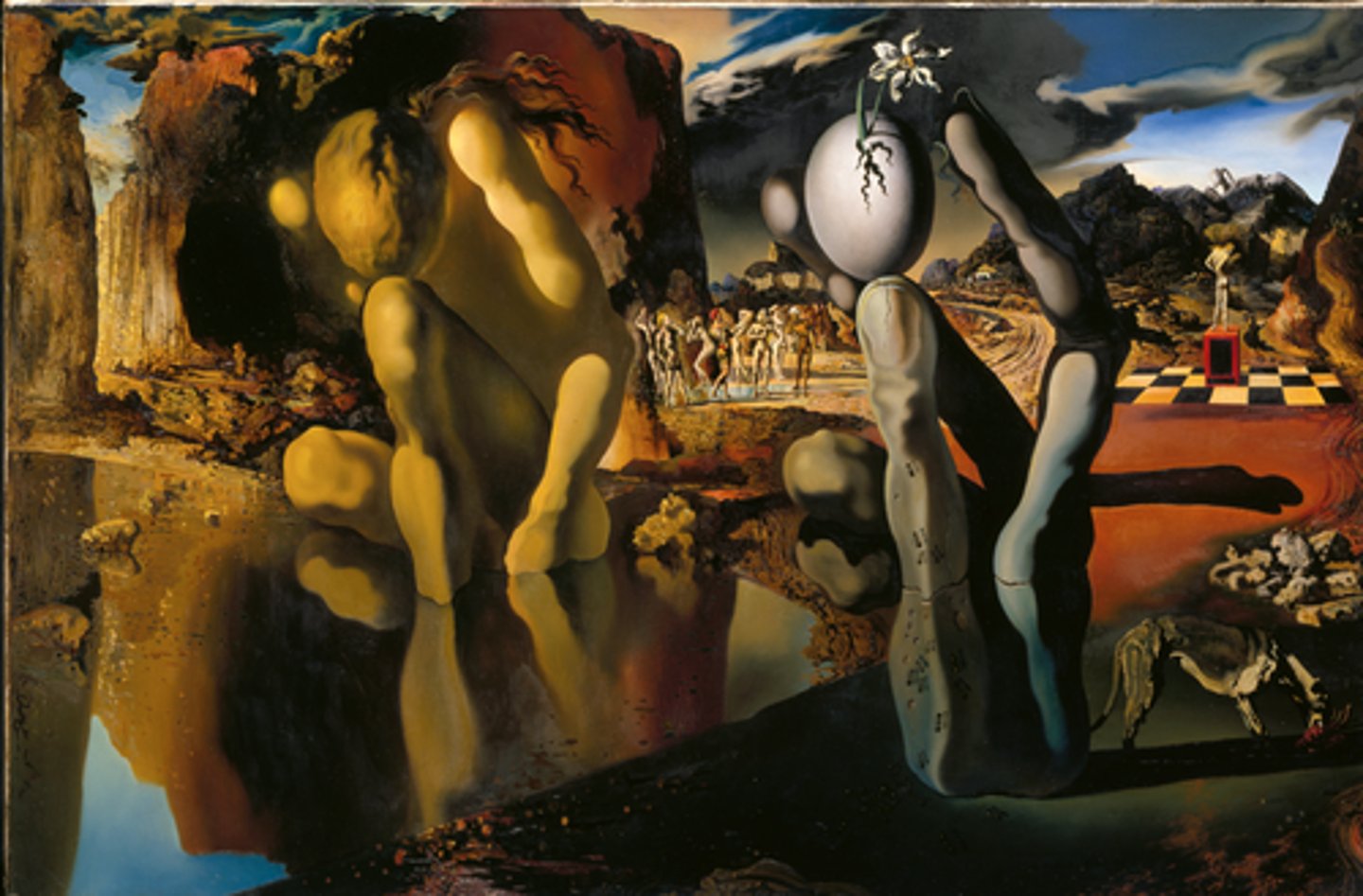art history final
1/36
There's no tags or description
Looks like no tags are added yet.
Name | Mastery | Learn | Test | Matching | Spaced |
|---|
No study sessions yet.
37 Terms
Fauvism
- Bold, strident, anti-naturalistic colors
- Color as an independent constructive element
- Reaction against Impressionism
- Strong, visible brushwork
- 1905-1908
Fauvist artists
Matisse, Rouault, Derain, de Vlaminck
Henri Matisse, Madame Matisse
1905, The Green Line
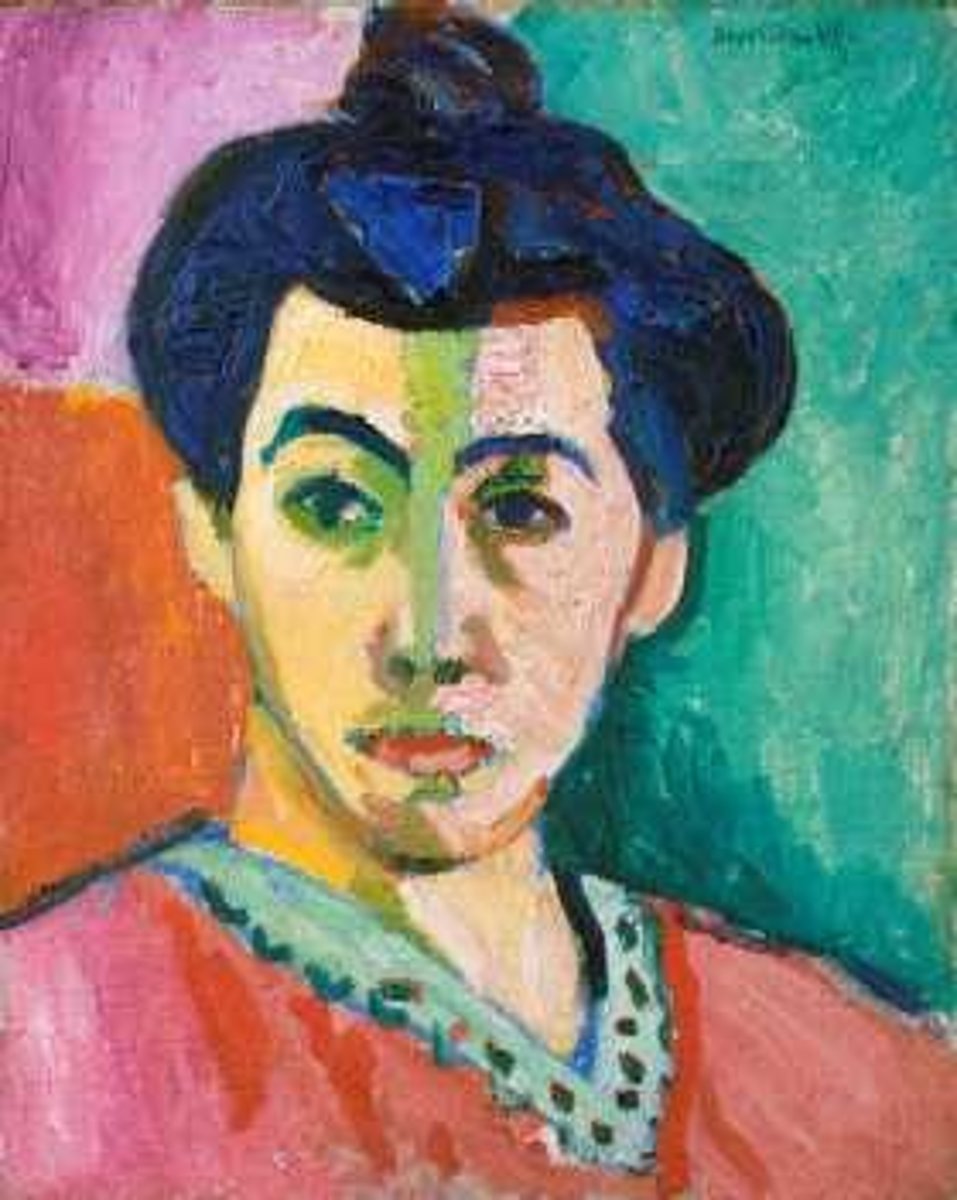
Henri Matisse, The Joy of Life
1906
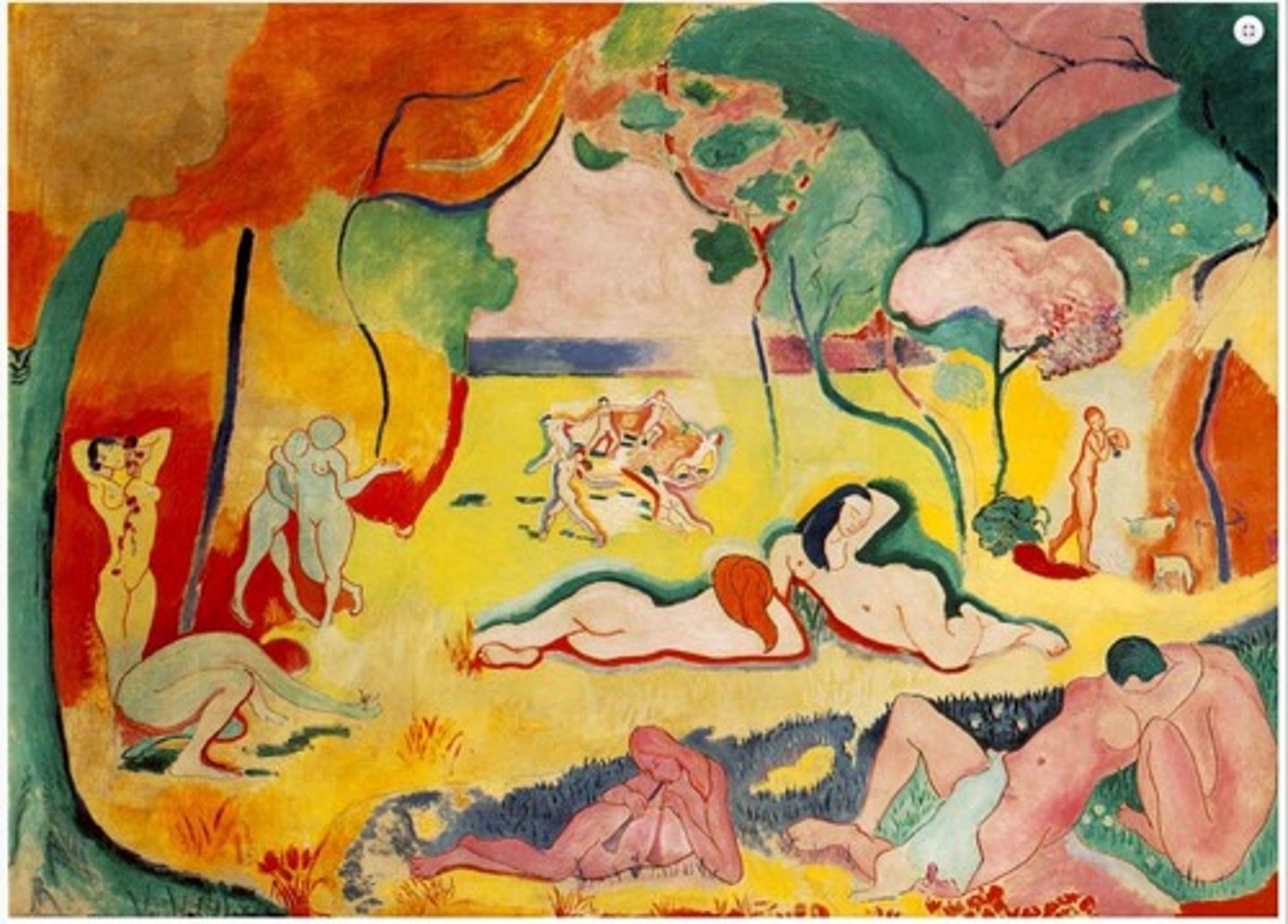
Die Brucke
- Expressive freedom rather than technical precision
- Similar to Fauvism, but darker psychological intensity
- Depicted anxiety and chaos of modern life
- 1905-1913
Die Brucke artists
Kirchner, Nolde
Der Blaue Reiter
- Abstract and symbolic forms
- Bright, non-realistic colors
- Connection to music
- 1911-1914
Der Blaue Reiter artists
Marc, Kandinsky, Macke, Klee
Edward Munch, The Scream
1893
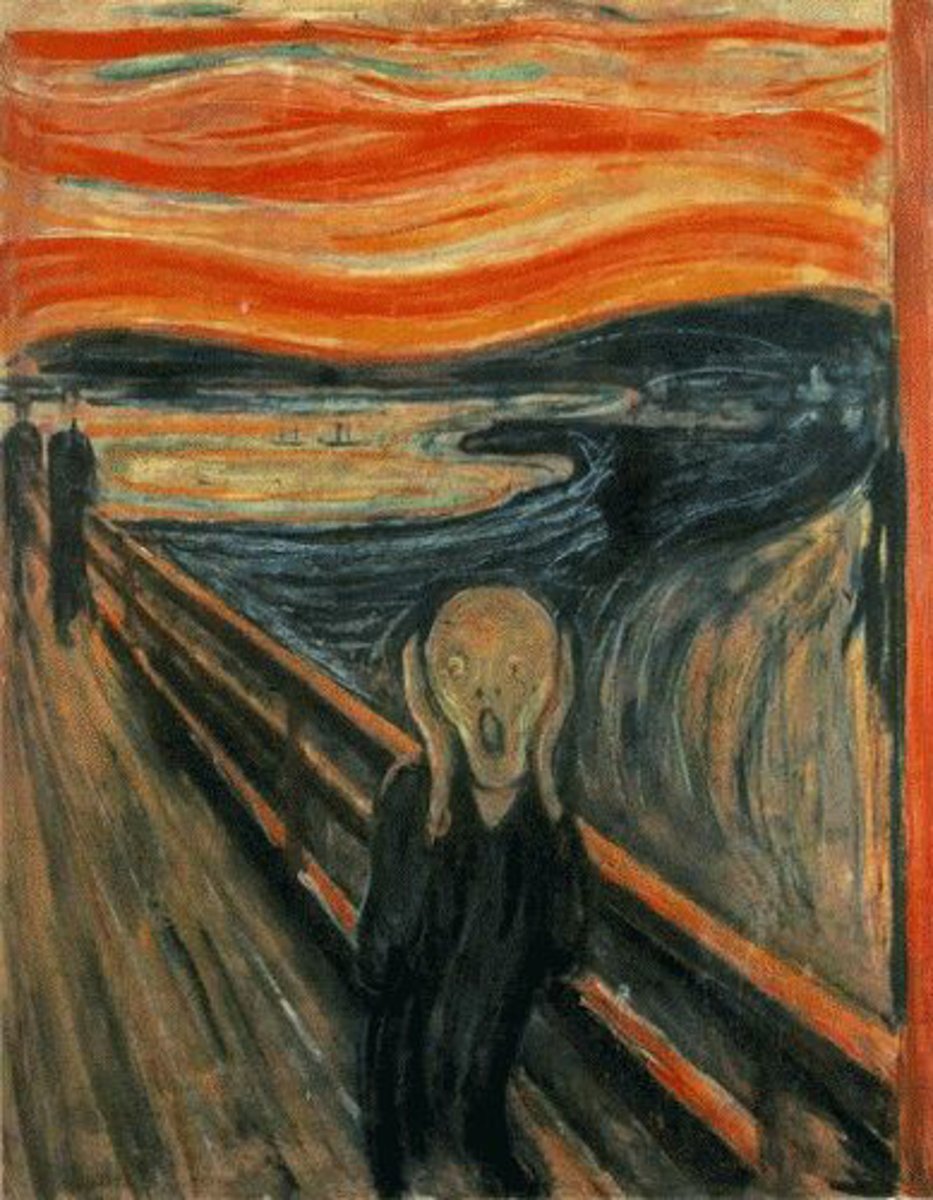
Ernst Ludwig Kirchner, Street, Berlin
1913, urban themes/chaos of modern life
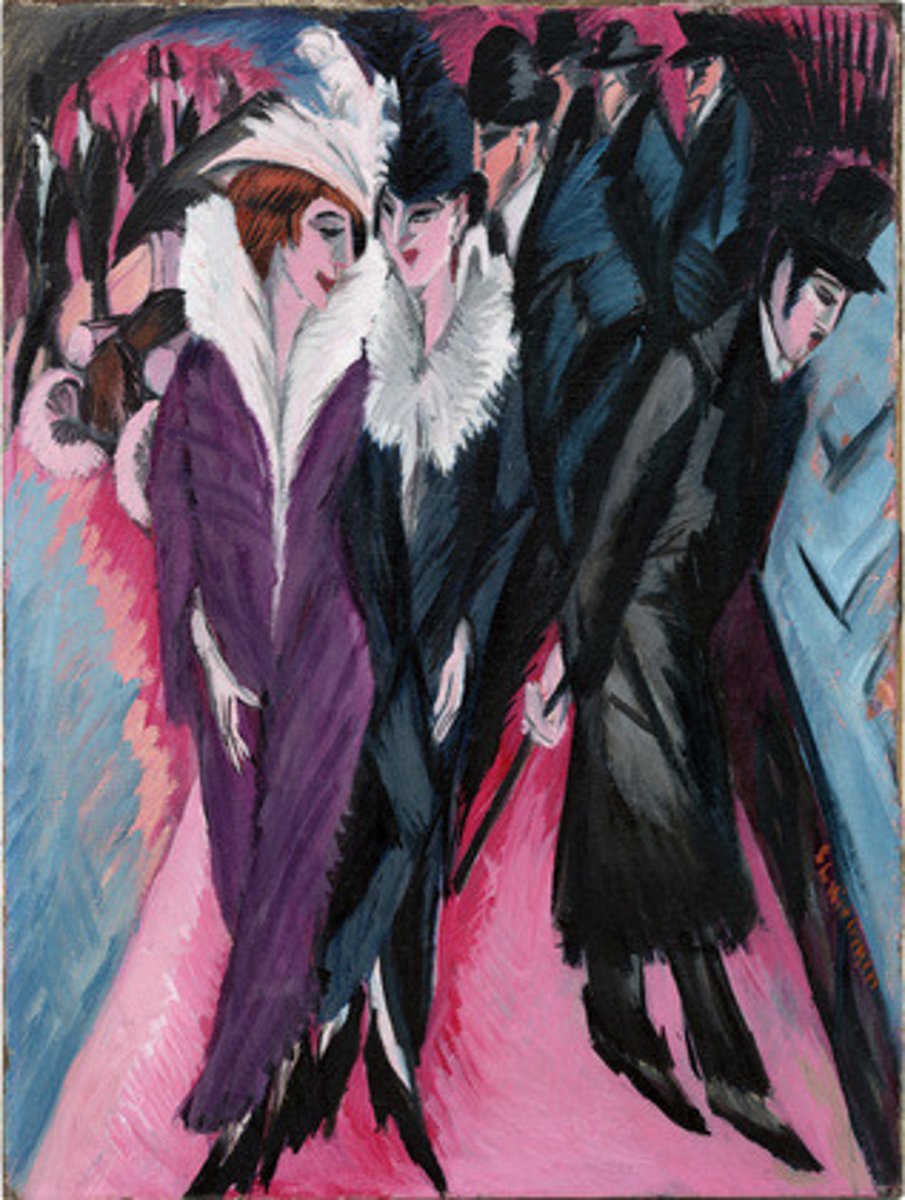
Wassily Kandinsky, Composition VII
1911, was considered the pioneer of abstraction
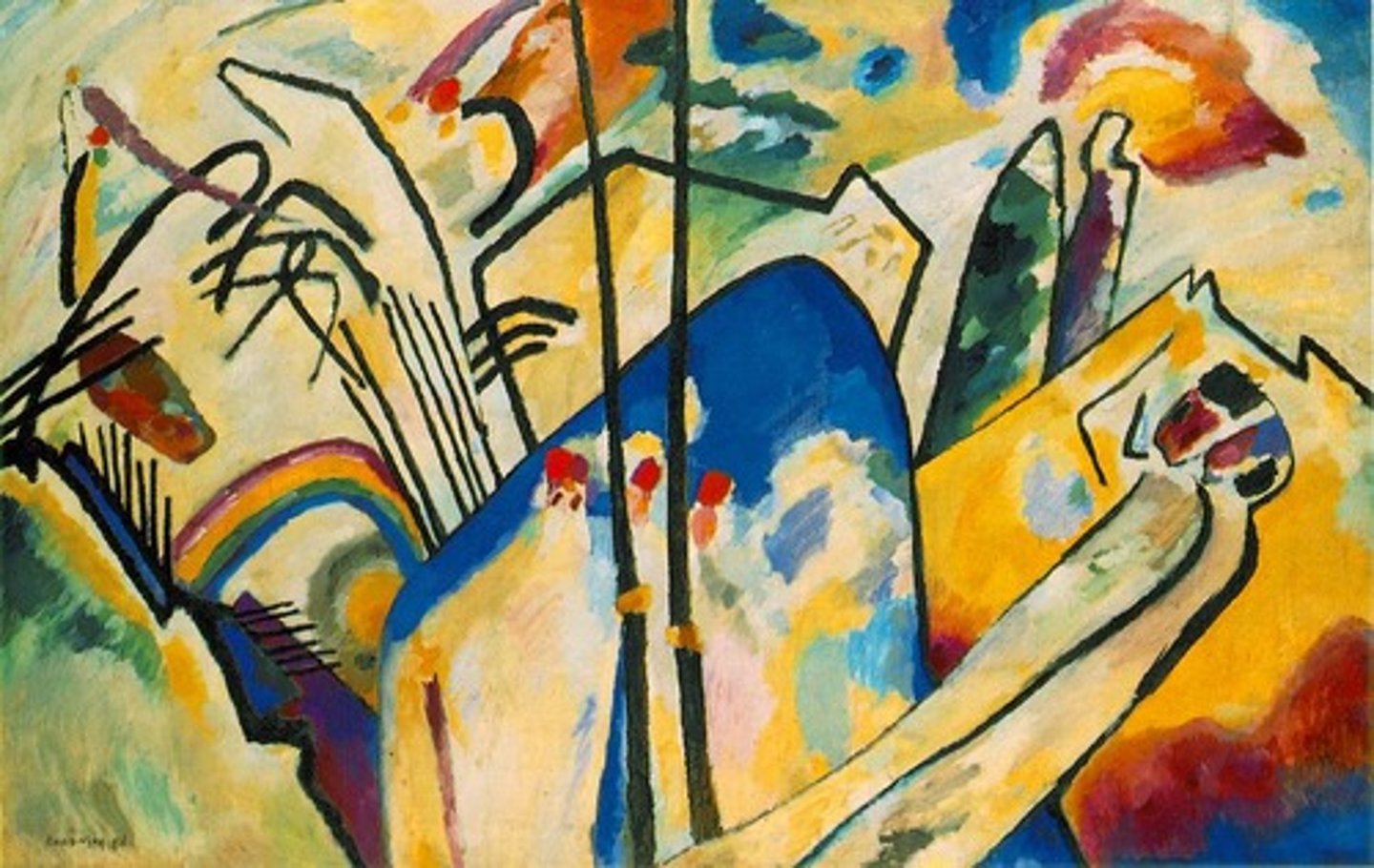
Futurism
- Universal dynamism
- Express the vortex of modern life
- Rebel against the words "harmonious" and "good taste"
Umberto Boccioni, The City Rises
1910
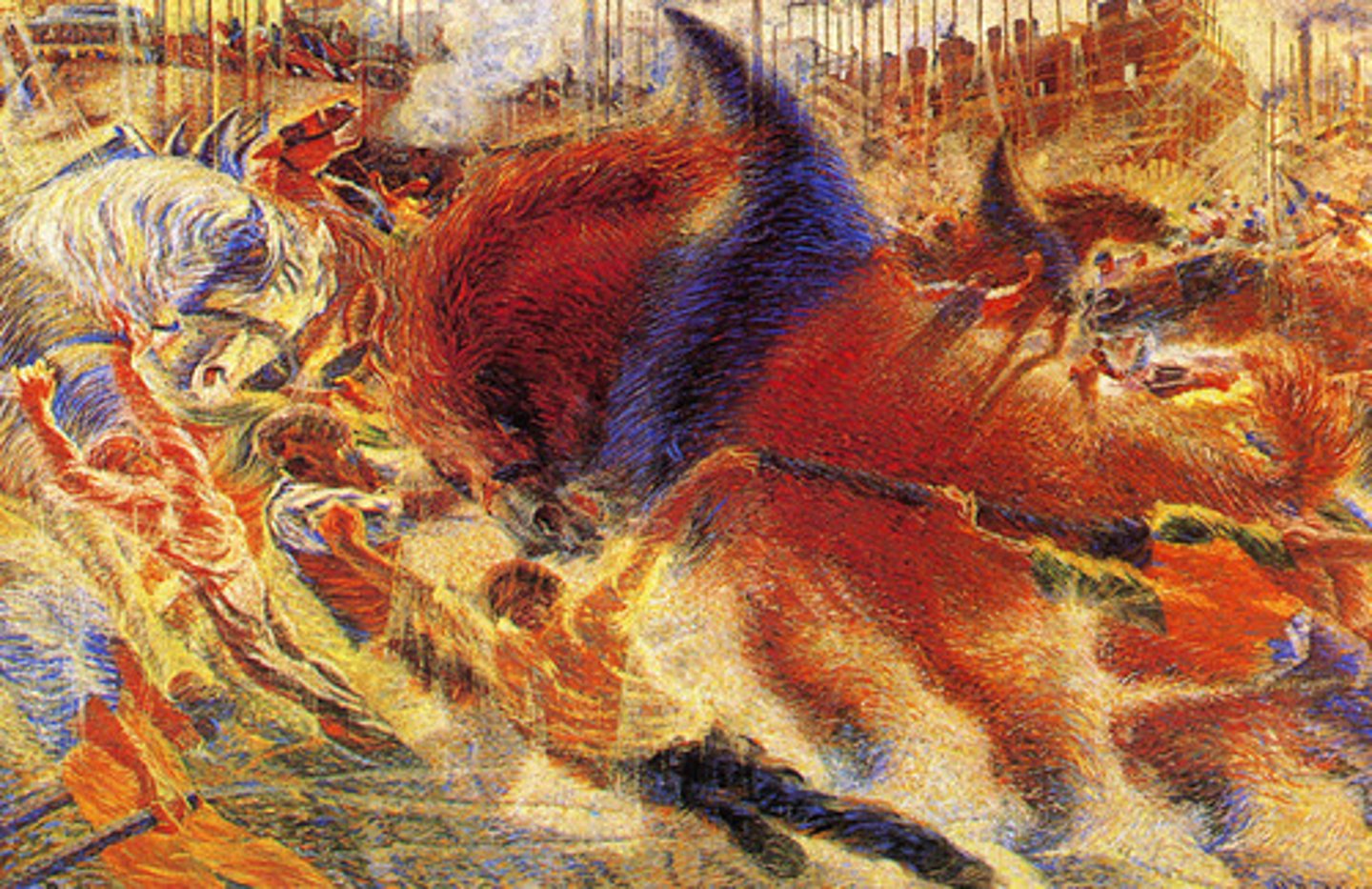
Giacomo Balla, Dynamism of a Dog on a Lead
1912

Dada
- Rejected all traditional conventions
- Dealt with the horrors of WWI
Marcel Duchamp, Fountain
1917, a ready-made
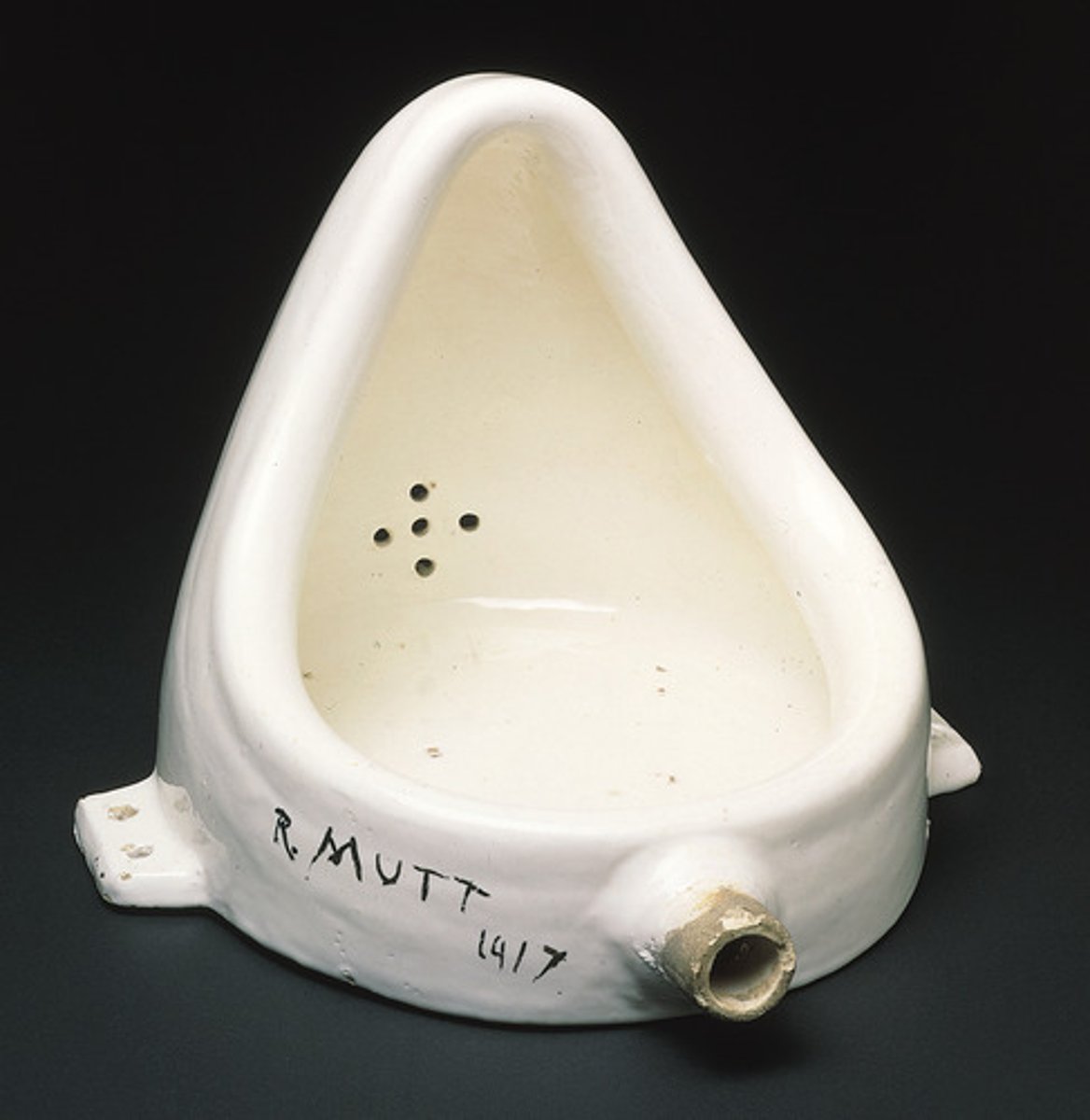
Marcel Duchamp, L.H.O.O.Q
1919
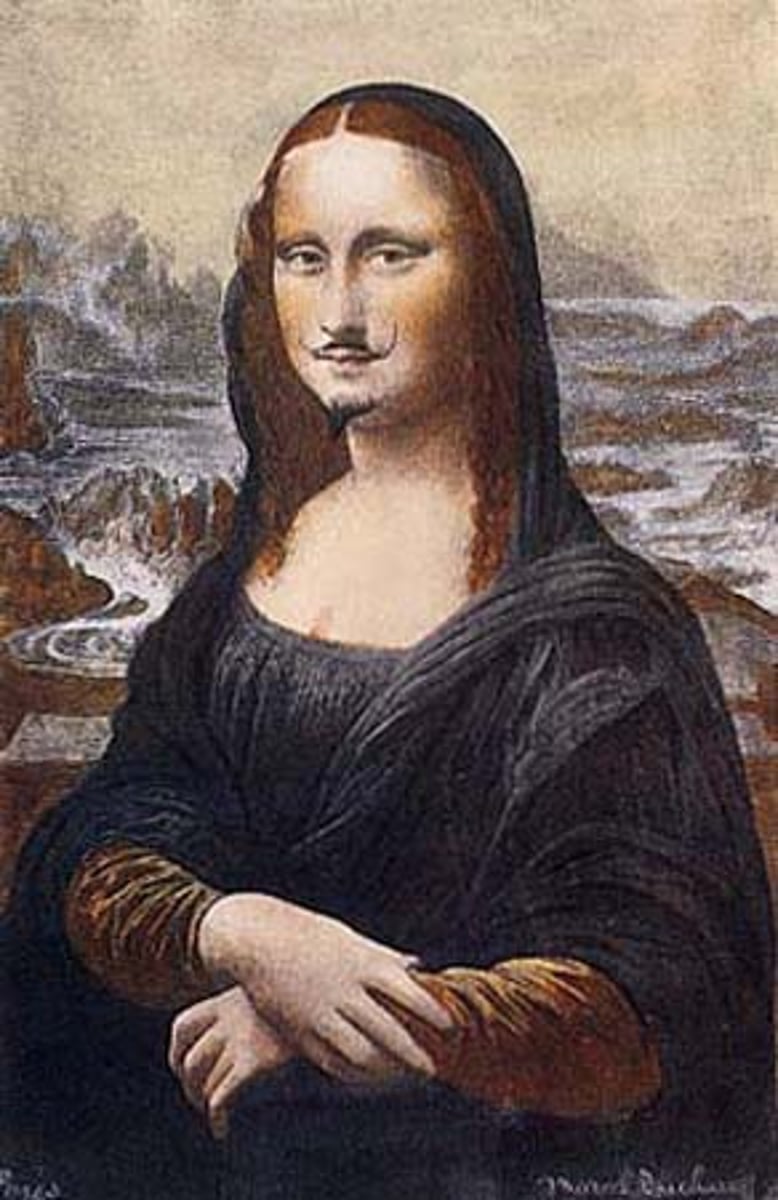
Hannah Hoch, Cut with the Kitchen Knife
1919
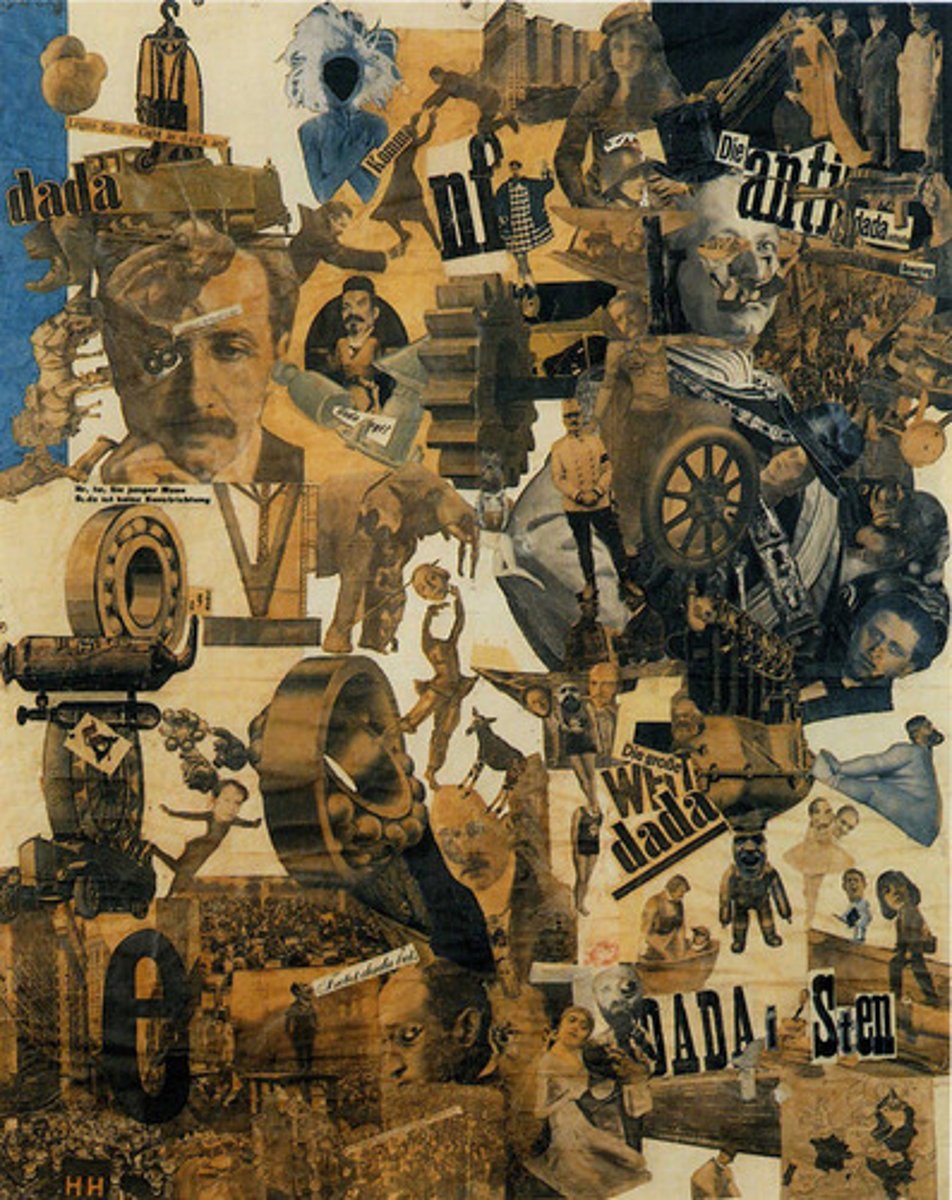
Hans Arp, Dada relief (Terrestrial form)
1916-17
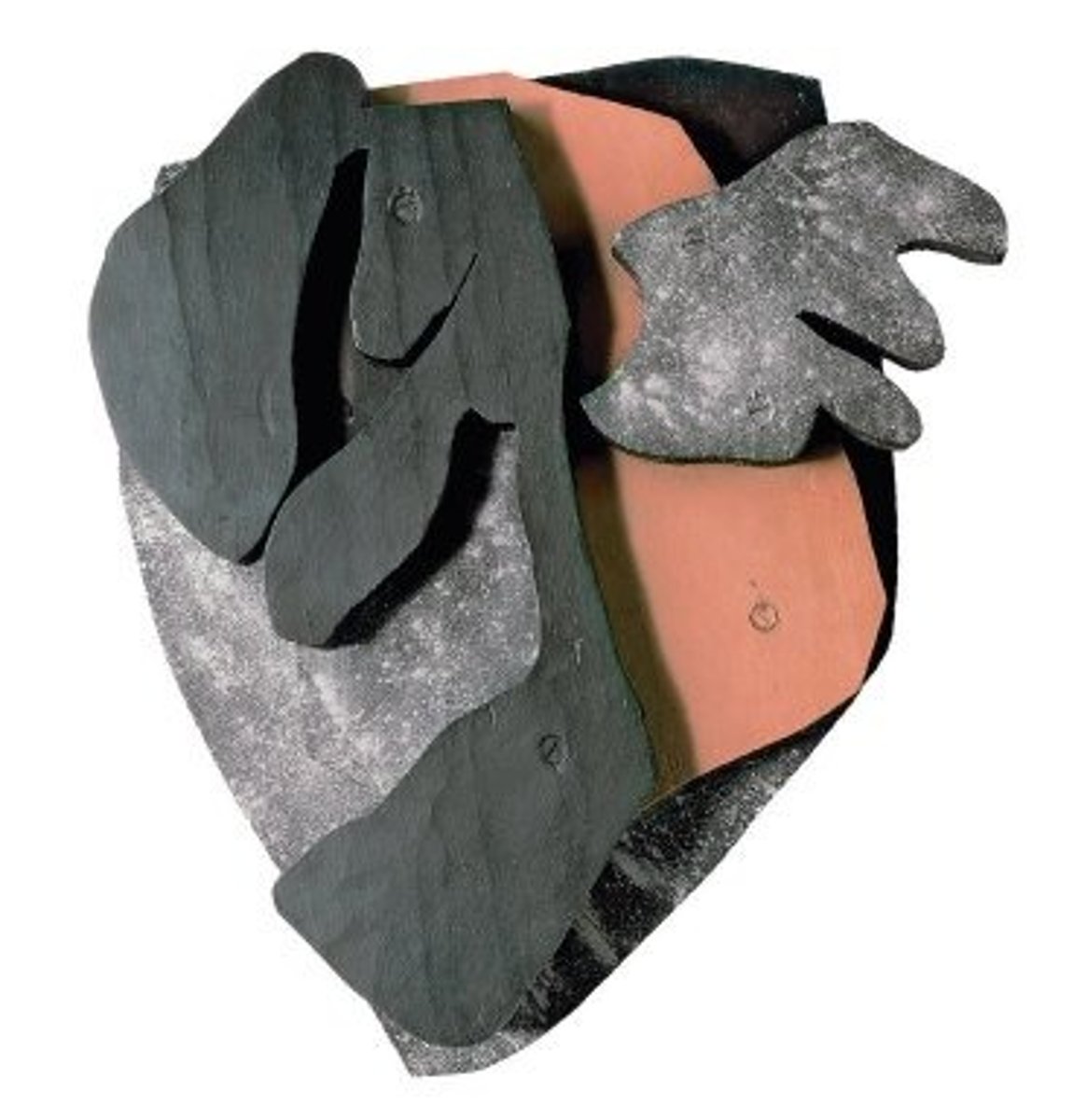
Surrealism
- Idea of the subconscious
- Emphasis on dream literature
- Left wing political ideals
Giorgio De Chirico, The Uncertainty of the Poet
1913, was considered by Breton to be a precursor of Surrealism, deserted city train (idea of escape), bananas (subconscious hidden image: sex fears or desires, taboo in real world)
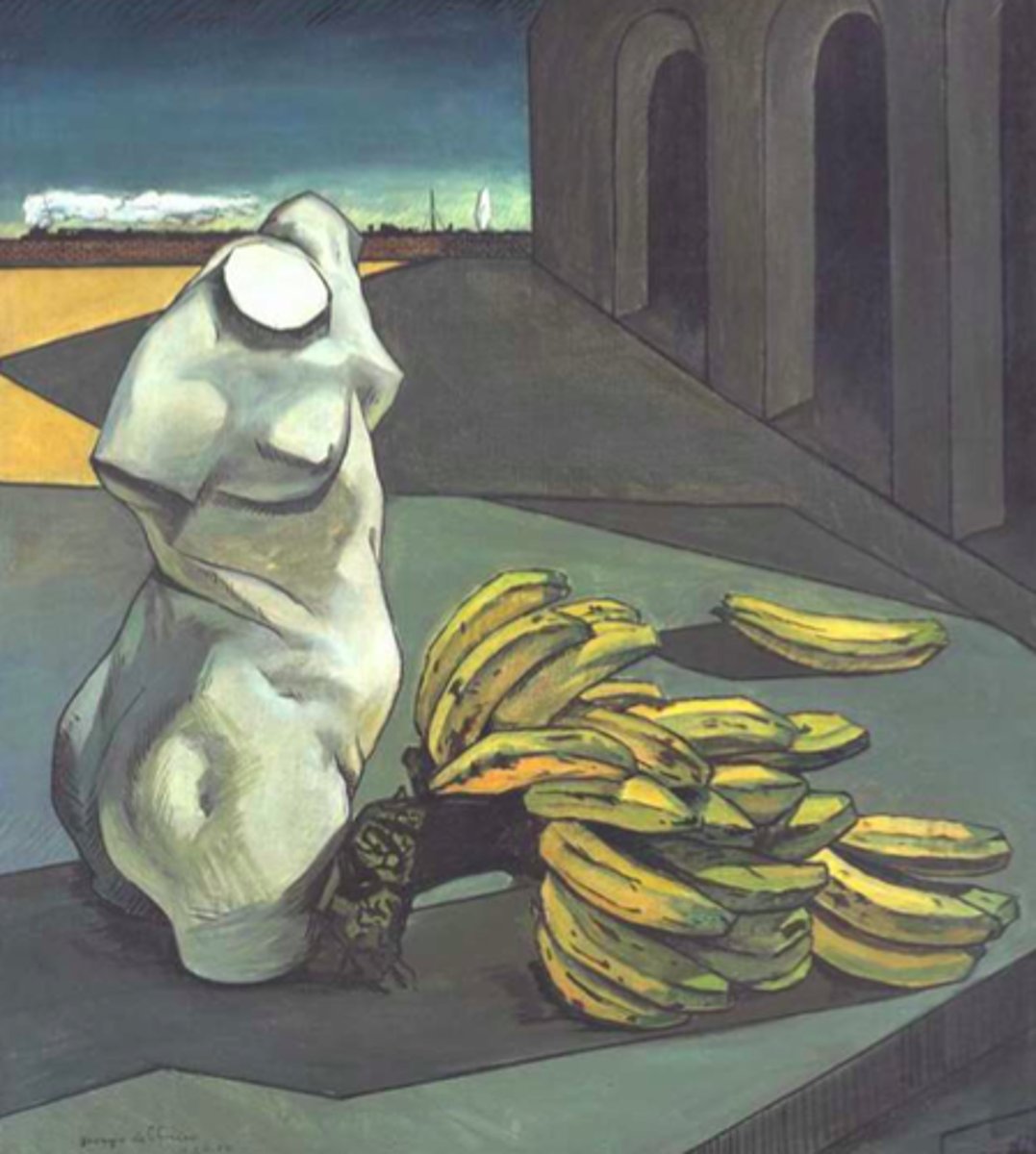
Rene Magritte, The Key to Dreams
1927, key: to unlock the subconscious, fictive frame: window (symbol of soul, of subconscious), black background: night (dreams) or chalkboard (childhood traumas)
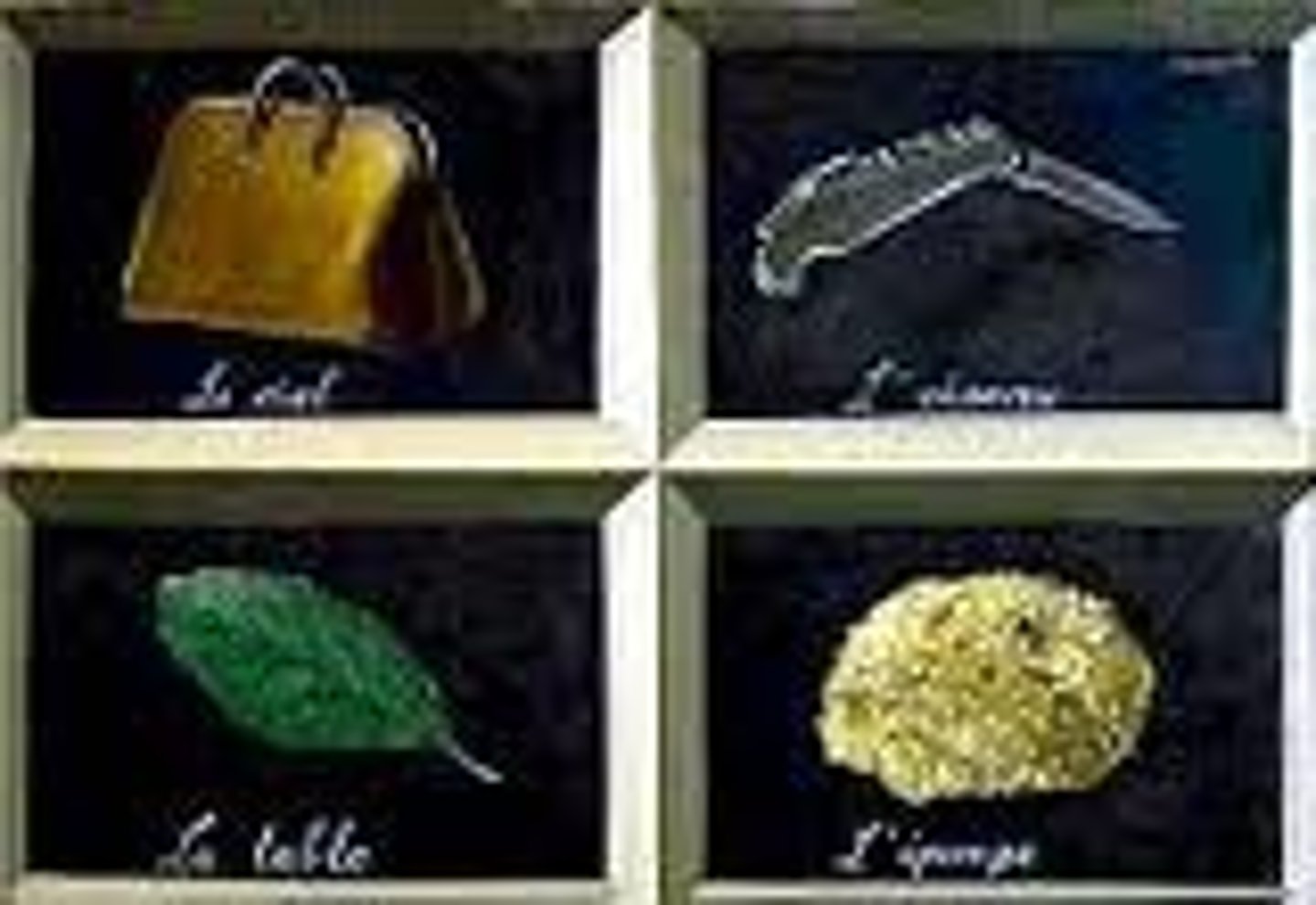
Rene Magritte, The Lovers
1928

Max Ernst, The Elephant Celebes
1921, was both a Dada artist and a Surrealist artist, collage-like elements Inspired by Freud's psychoanalysis, surreal landscape includes disjointed human figures, mysterious objects
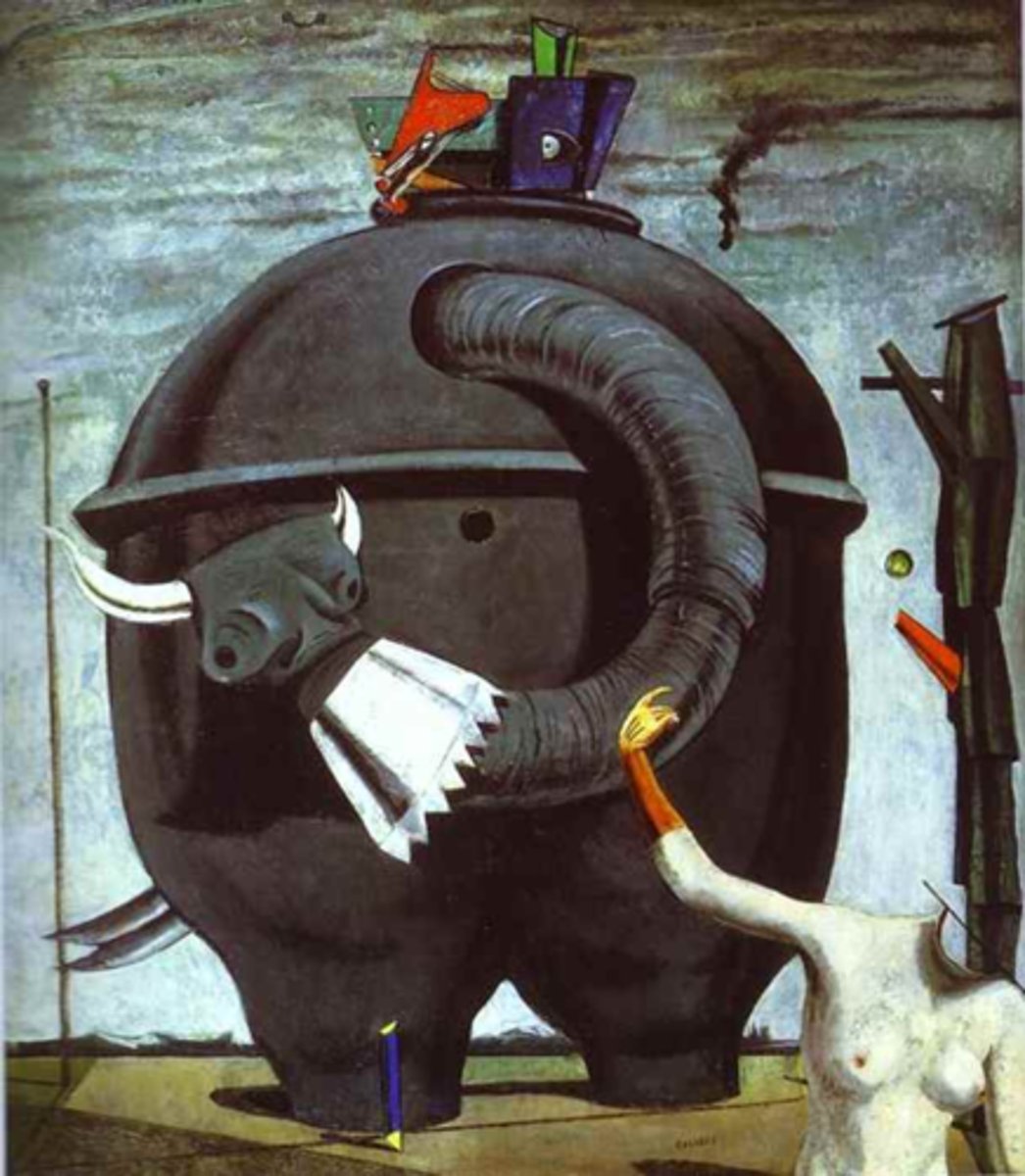
Andre Masson, Automatic Drawing
1924, automatic drawing taps into the unconscious
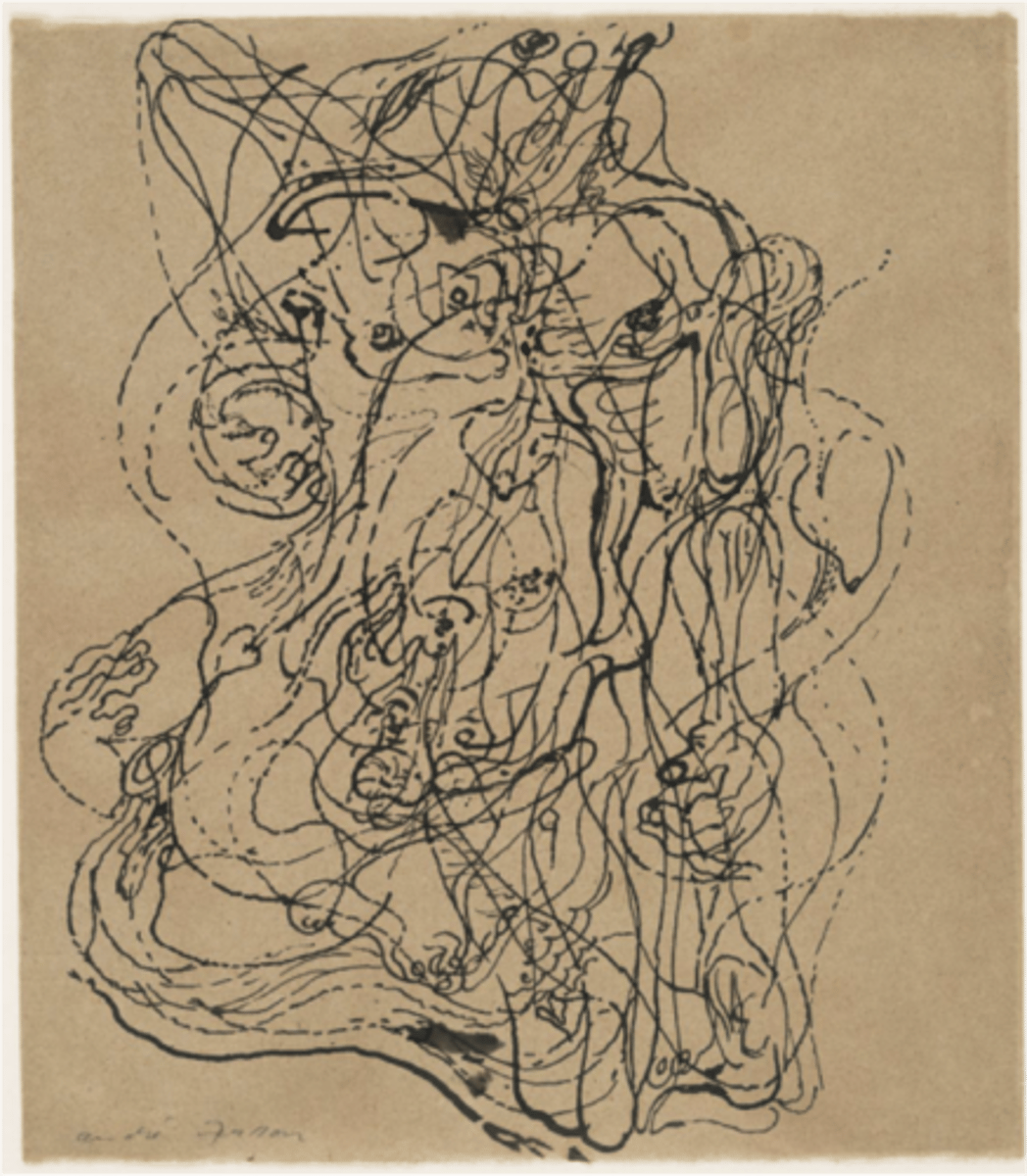
Salvador Dali, The Persistence of Memory
1931
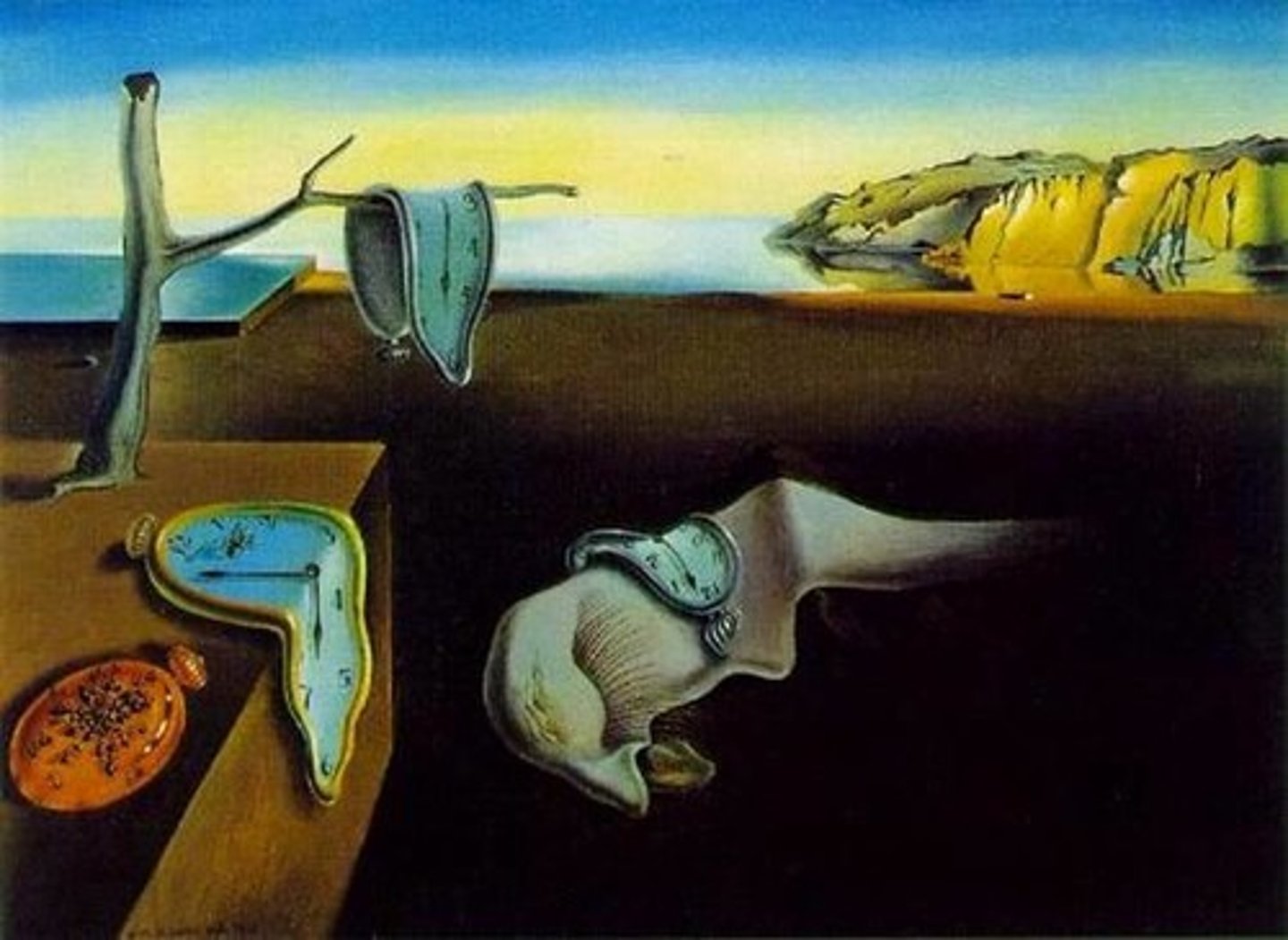
Salvador Dali, Boat (at anchor in Bay of Cadaques)
1919, impressionism, inspired by Ramon Pichot
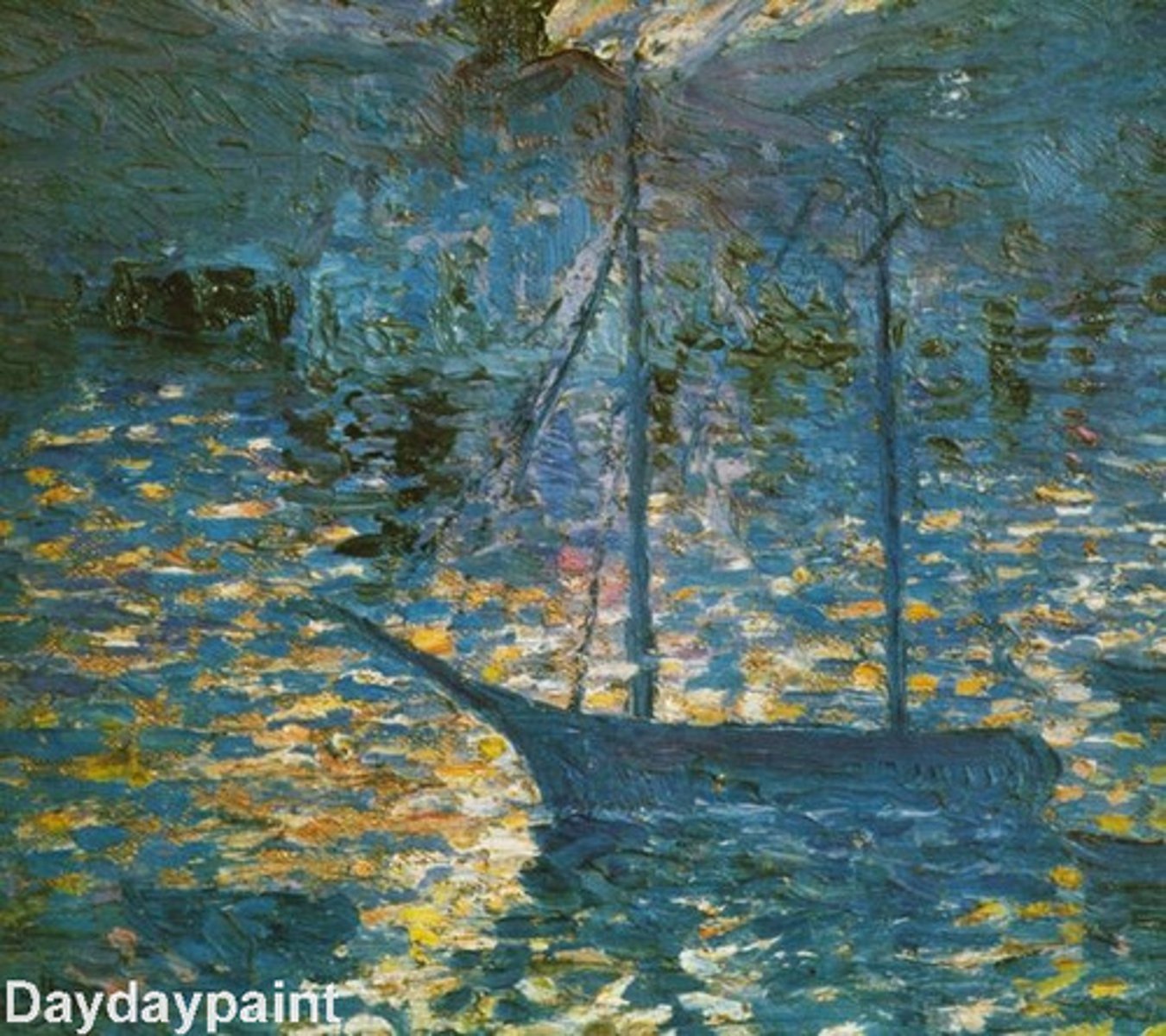
Salvador Dali, Cubist Self-Portrait
1923, influence of analytical and synthetic Cubism
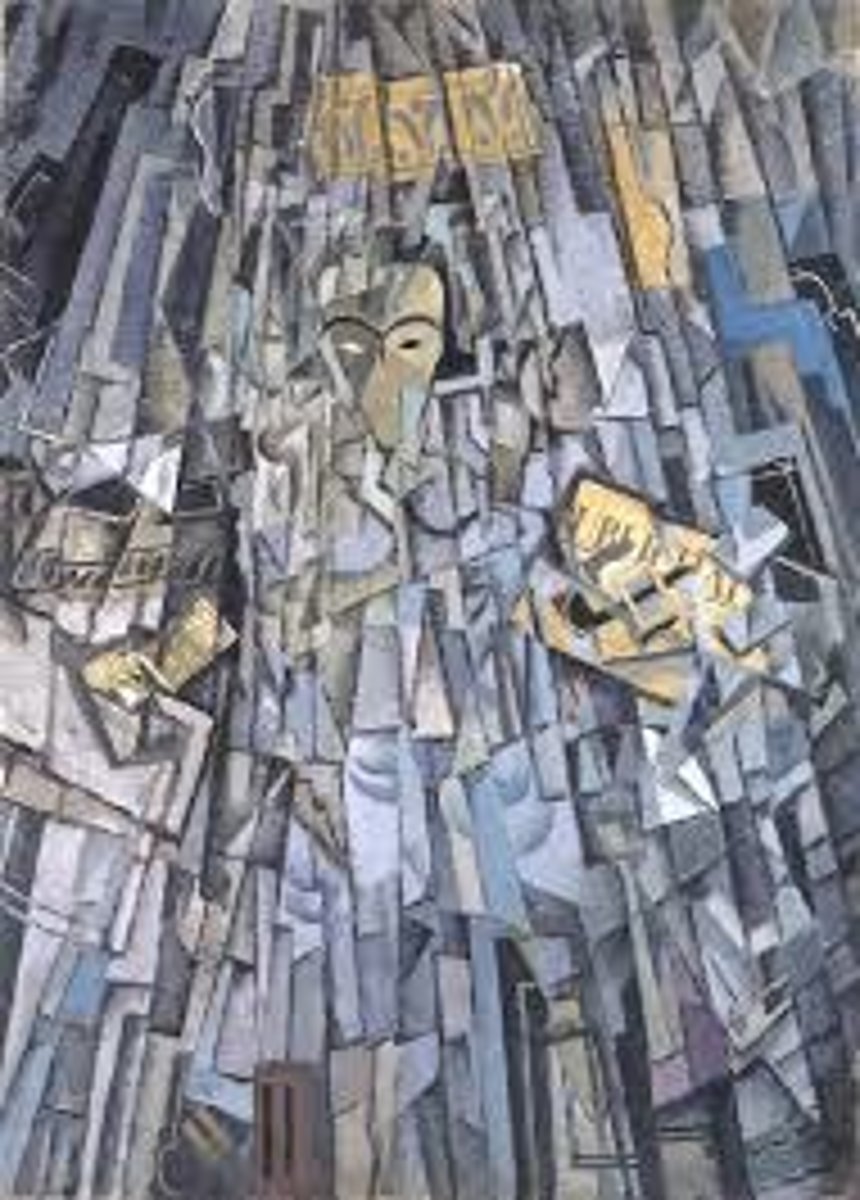
Salvador Dali, Woman at the Window
1925, depiction of his sister Ana Maria
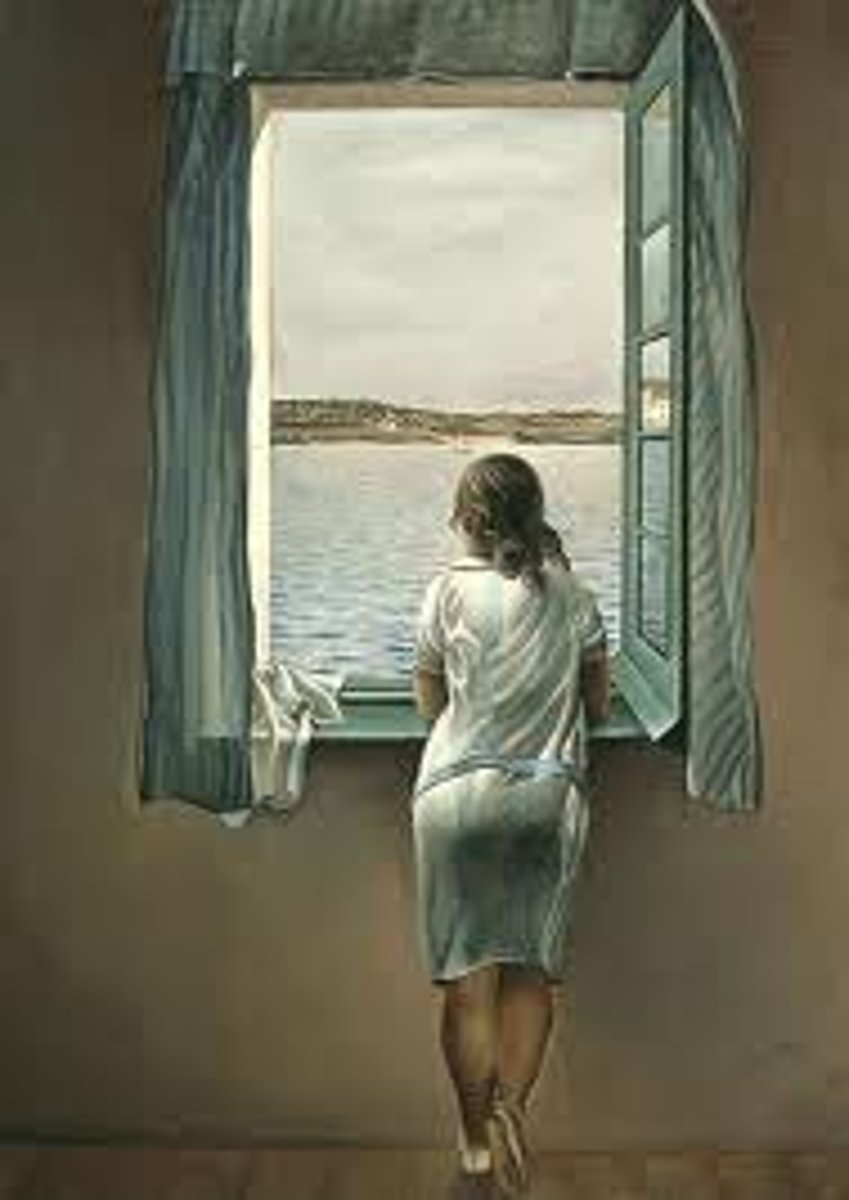
Salvador Dali, Composition with Three Figures (Neo-Cubist Academy)
1926, blends elements of Neolassicism and Cubism
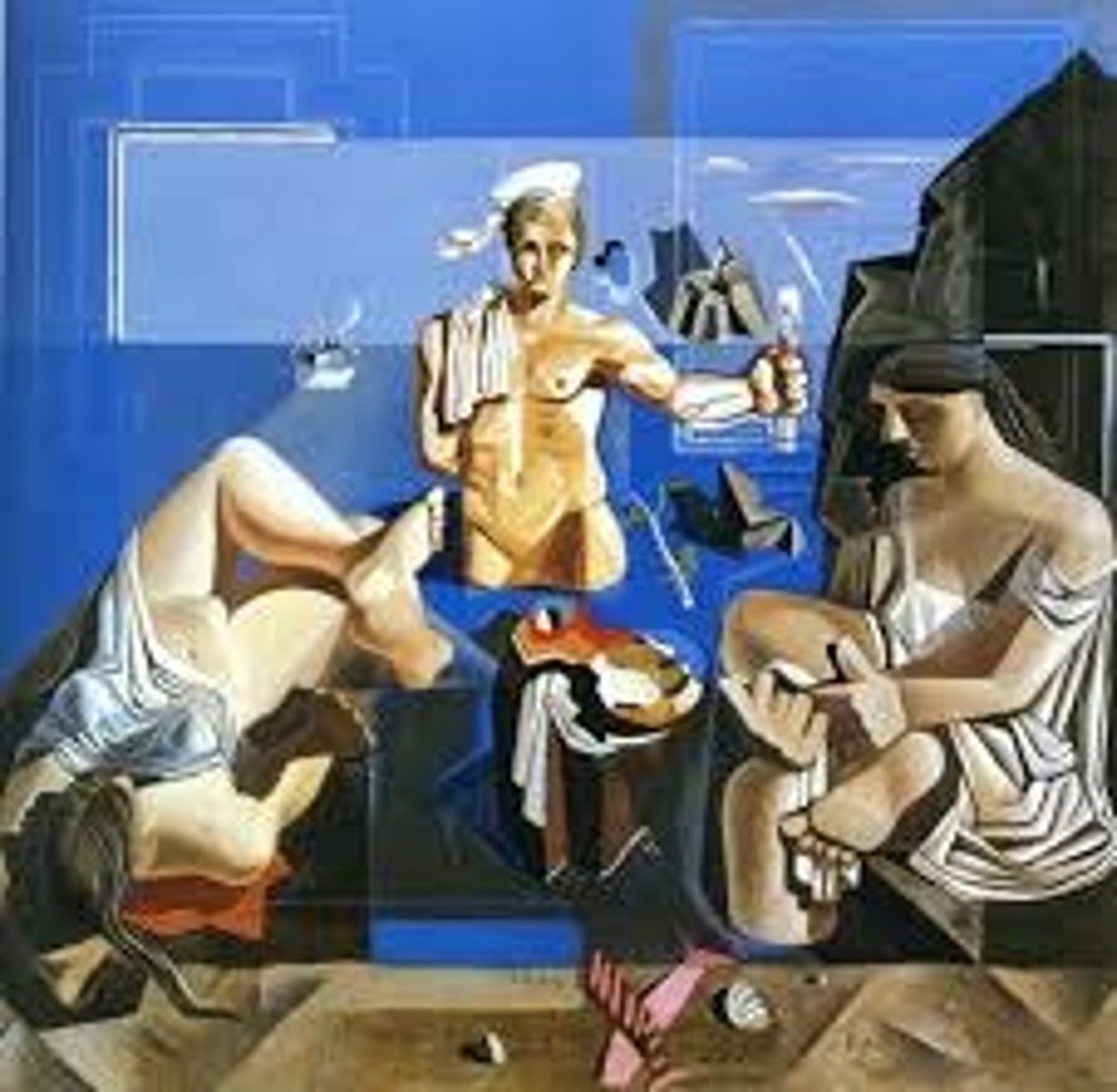
Salvador Dali, The Great Masturbator
1929, shows his fear of grasshoppers, expression of his heterosexual anxiety
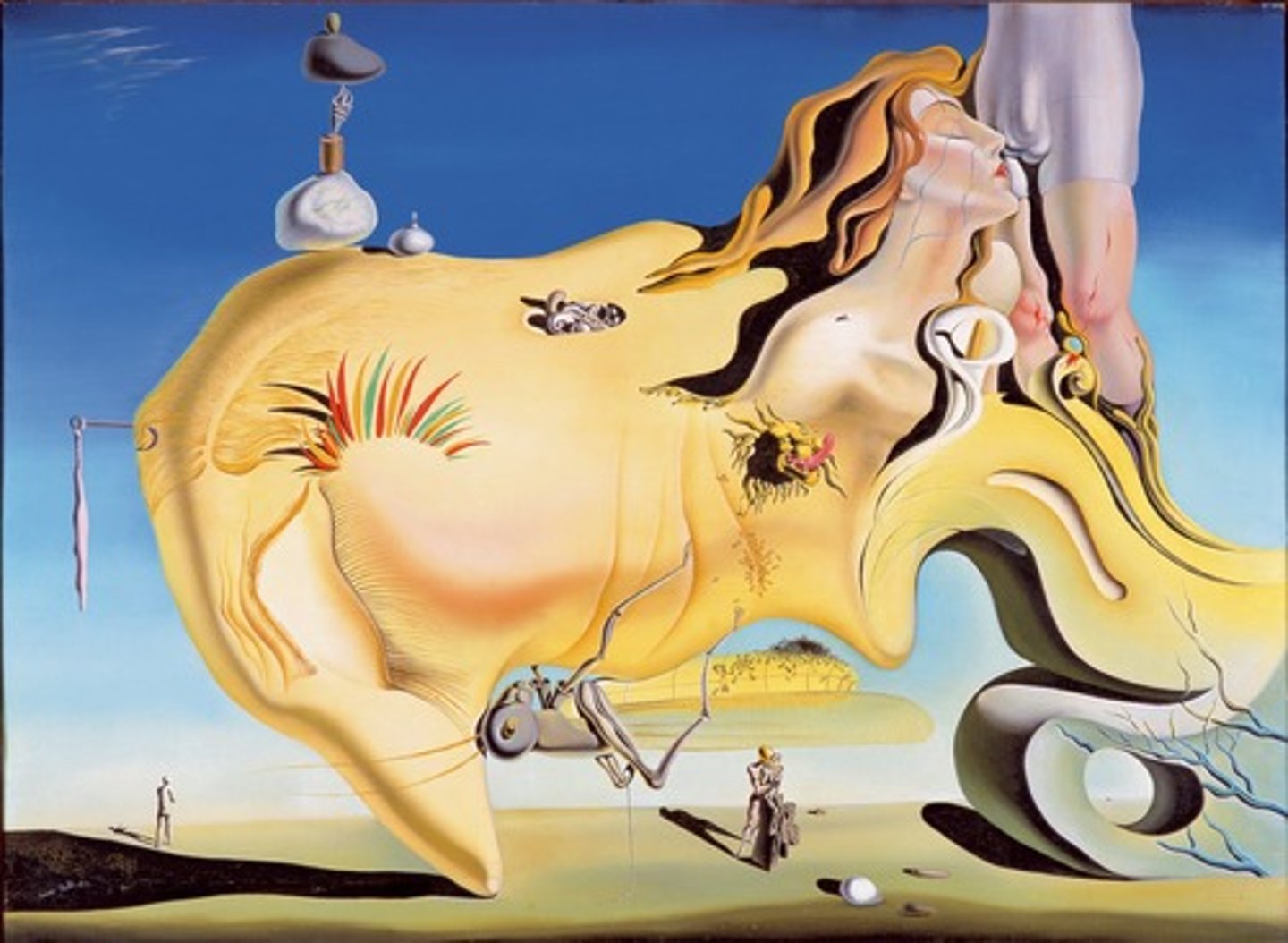
Joan Miro, The Tilled Field
1923-24

Joan Miro, Catalan Landscape (The Hunter)
1923-24
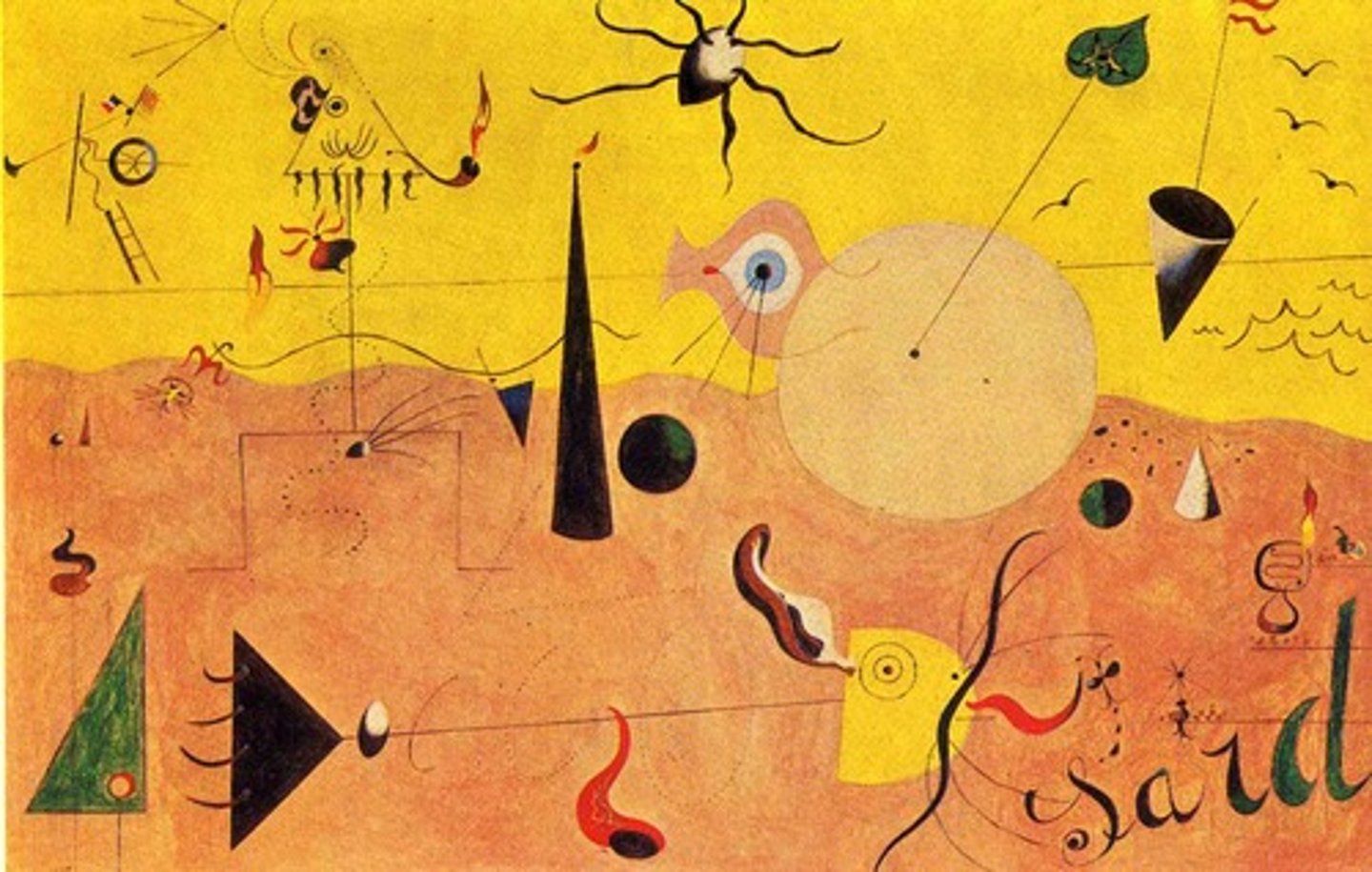
Joan Miro, Harlequin's Carnival
1924-25
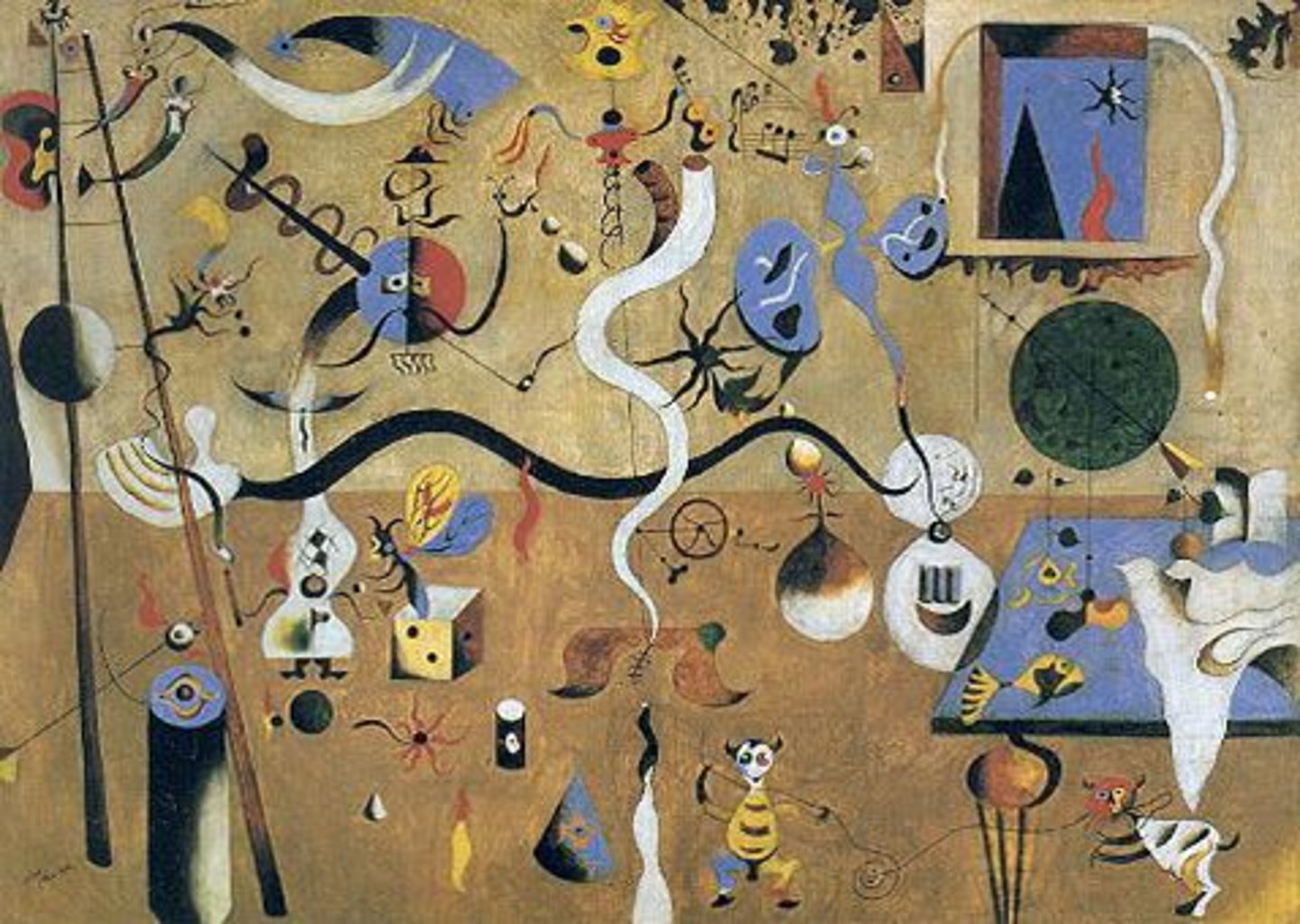
Salvador Dali, The Specter of Sex-Appeal
1934, depiction of Cap de Creus
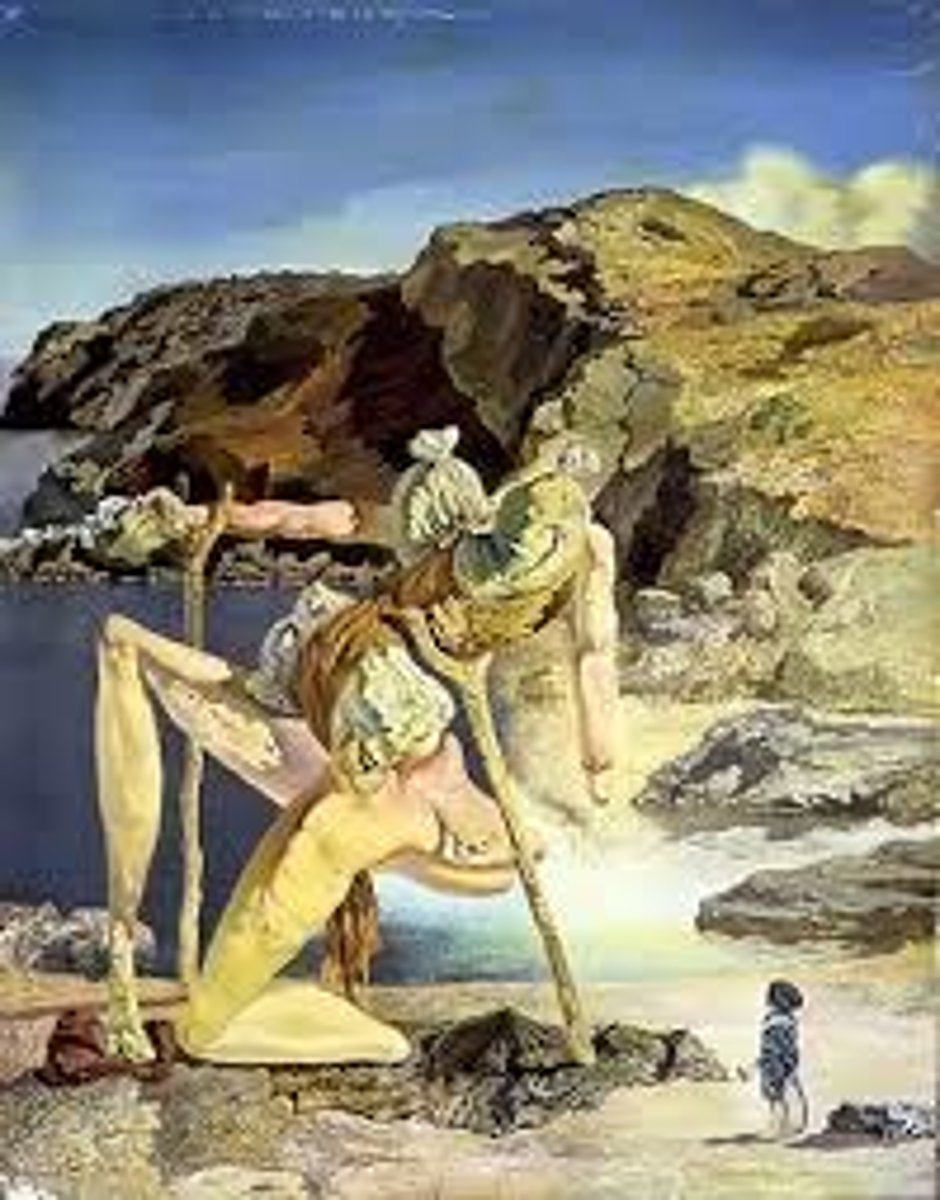
Salvador Dali, Archaelogic Reminiscences of Millet's Angelus
1935, represents a burial of a dead child
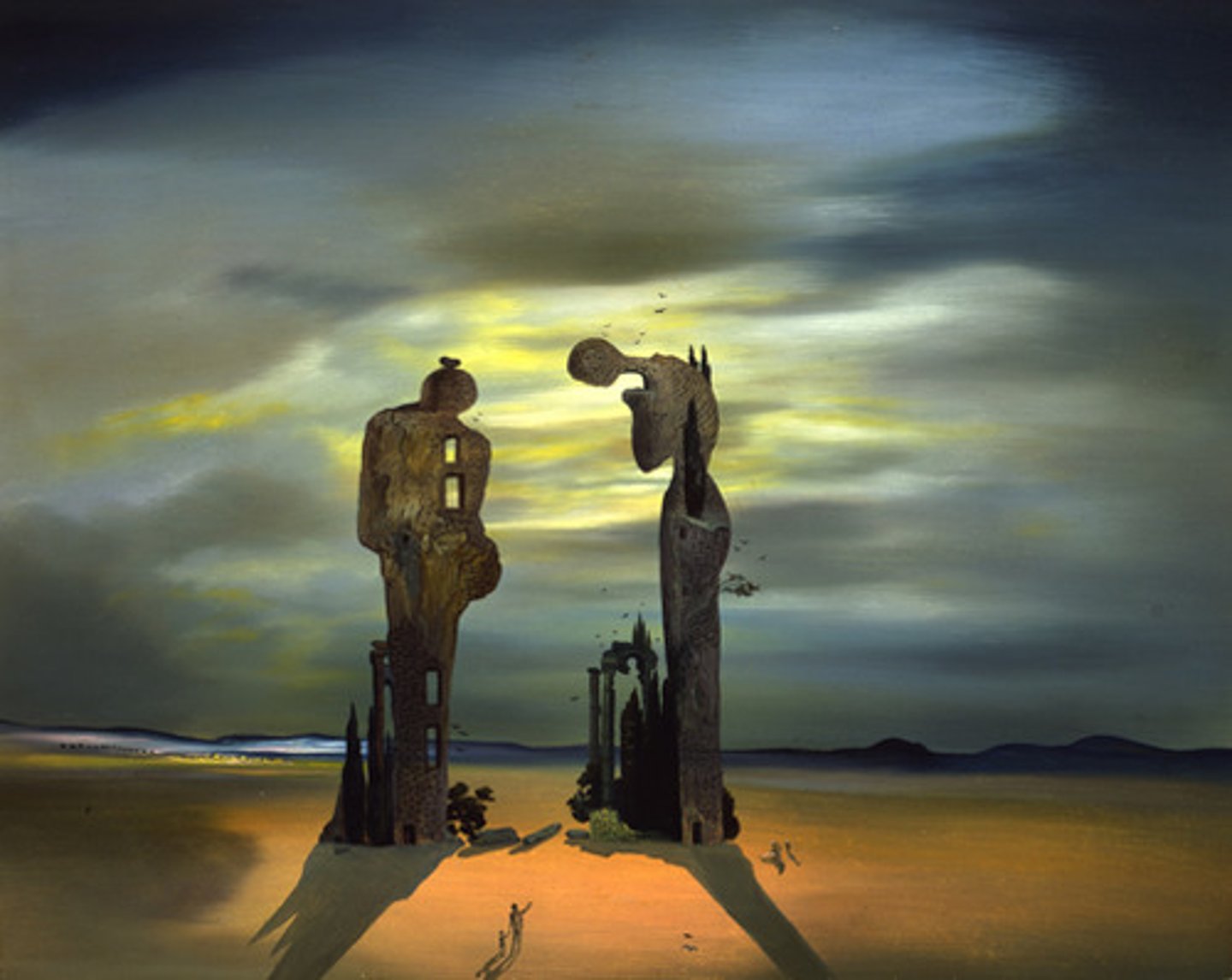
Salvador Dali, Metamorphosis of Narcissus
1937, uses the paranoiac-critical method, creating optical illusions and multiple interpretations within the same image
